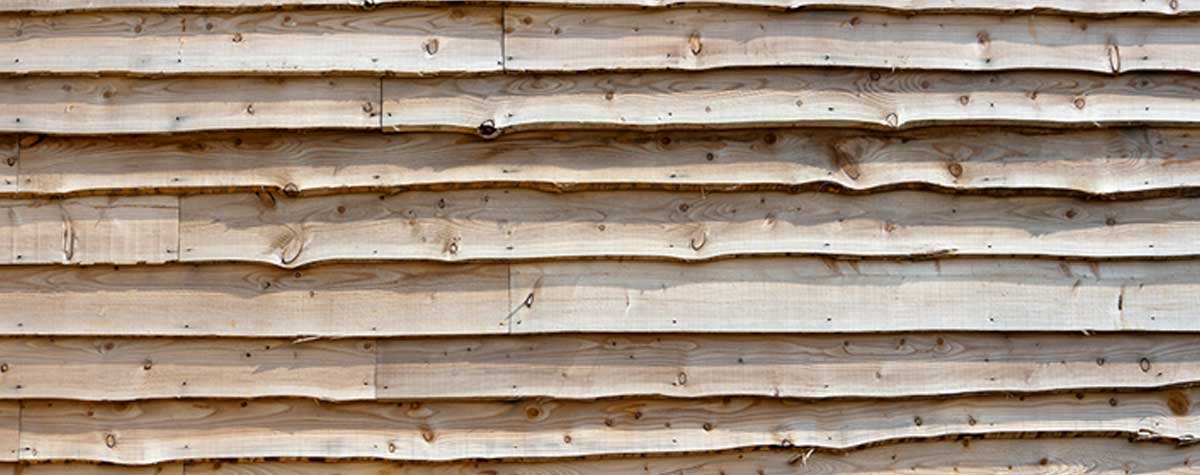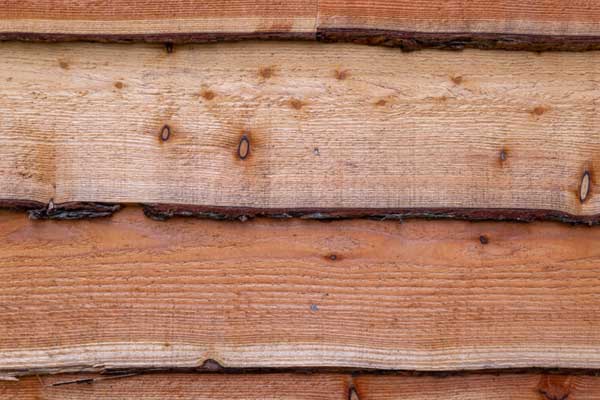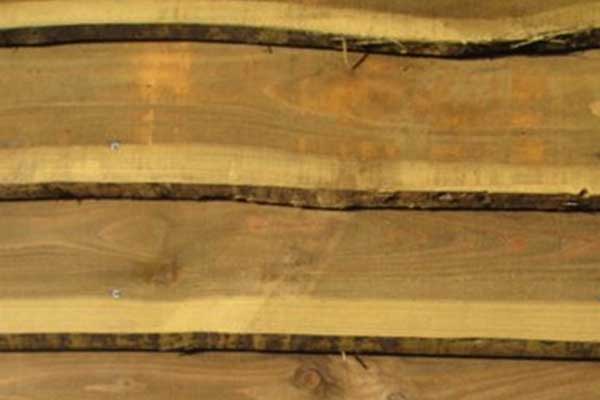-

Timber Cladding
Cladding
We can provide machined cladding profiles. The stock size 125mm cover x 20mm (a wider cover on request) and we are not offering the narrow version anymore.
Timber species for these would be Oak, UK Larch, British WRC, Canadian WRC, Siberian Larch and Thermowood.
Waney edge cladding is also available in Douglas Fir, UK Larch, UK Cedar and Oak, priced per square metre POA.
Click HERE to download a PDF of the Cladding Fixing advice.


Advice
Cladding Advice
- When ordering cladding such as TGV or shiplap, add 10% to allow for waste
- When using waney edge, calculate the exact area and add 25% to the area. For example, an area 5.5m x 2.7m would equal 14.85m2, now add 25% to this. You should now order 18.6m2 which allows for the overlap and waste.
- When your cladding arrives, allow approximately a week to acclimatise to the local environment. Usually keep it under cover but not covered by plastic sheeting.
- When mounting the cladding the best time to install is during autumn or winter. Never on a hot day. Thermally modified timber can be mounted all year round.
- Ensure the backing structure has good air flow.
- Mount tongue and groove profiles with some slight play to allow for any expansion.
- For best results use annular ring shank nails, preferably stainless steel.
- For cladding boards 150mm and over, it is not recommended to secret nail. Instead fix through the face.
- For corner detail, the most common method is a 45mm x 45mm block that meets the cladding boards at 90 degrees. For best results, corner detail should sit proud of the cladding.
Cladding Types
- When choosing a cladding profile, first decide how you want the finished project to look. The options are vertically or horizontally mounted. Some profiles are not recommended for vertical mounting, shiplap and waney edge for example are designed for horizontal mounting.
- Choosing the material is also a deciding factor with various points to consider, such as price, durability, look and level of maintenance required. Below are some of the many choices available
Timber Options
- Larch family, UK grown or Siberian
- Cedar family, UK grown or Canadian Western Red
- Douglas Fir
- Oak
- Thermally modified, Redwood (Thermowood), Poplar, Ash and Sycamore (Brimstone)*
*Care should be taken with thermally modified timber, it is very brittle, therefore care should be taken when handling and fixing. The benefit however, is they require little to no maintenance.
Durability
- Red Grandis – Straight grain hardwood and has a similar colour to Canadian Western Red Cedar. Class 3 – Moderately Durable (10 to 15 years)
- UK Larch – Class 3 – Moderately Durable (10 to 15 years)
- Siberian Larch – Class 3 – Moderately Durable (10 to 15 years)
- Douglas Fir – Class 3 – Moderately Durable (10 to 15 years)
- UK Grown Western Red Cedar – Class 2 to 3 – Moderately Durable (15 to 20 years)
- Canadian Western Red Cedar – Class 2 – Durable (15 to 25 years)
- European Oak (Quercus Robur) – Class 2 – Durable (15 to 25 years)
- Thermowood (Modified) – Class 2 – Durable (15 to 25 years)
Timbers to avoid
- Sycamore (unless modified)
- European Beech
- European Birch
- American White Ash
All Non-durable (less than 5 years)
Click HERE to download a PDF of this advice.
Valley Sawmills © 2023

